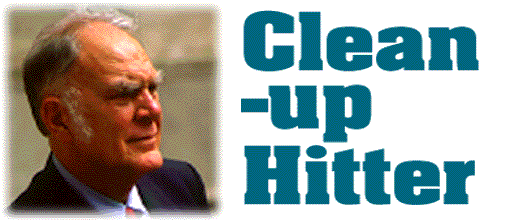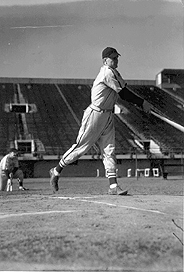

Long before F. Sherwood Rowland began to study chlorofluorocarbons,the man-made gases were a household force. His work in atmospheric chemistrymade CFCs a household word--and halting their production a global issue.
By William Burton
Photograph by Dan Dry
What is the greatest sports teamof all time? In basketball, some say it's the current vintage Chicago Bulls.Others cling to the Lakers of the Kareem era, or the Celtics of the 1960s.In baseball, many point to the Yankees of the 1920s. Some sports authoritiesargue that it's impossible to compare teams from different eras--and thattrying to declare an all-time greatest team in all of sports isa hopeless exercise in comparing apples and oranges.
But what if we were to pursue the same frivolity withregard to more serious human endeavors: what if we tried to pick out themost important Nobel Prizewinning discovery? Planck's quantum theoryof energy (physics, 1918) is the cornerstone of modern physics. Watsonand Crick's elucidation of the double helix (physiology or medicine, 1962,with Maurice Wilkins) unleashed a biological revolution that is still unfoldingin ways that astound. Shockley, Brattain, and Bardeen (physics, 1956) broughtus the transistor, which not only ushered in the information age, but alsomade it easier for us to listen to--and argue about--ball games.
Most Nobel Prize winners are lauded for what they havegiven society, not for what they have taken away. Then there is the teamof three scientists who shared the chemistry prize in 1995. F. SherwoodRowland, SM'51, PhD'52, DSc(Hon)'89, recipient of the University's 1997Alumni Medal, is one of those three laureates. Rowland--the Donald Brenresearch professor in chemistry and earth system science at the Universityof California, Irvine--along with his research associate Mario Molina andindependent contributor Paul Crutzen of the Max-Planck-Institute for Chemistryin Germany revealed an insidious and potentially catastrophic danger lurkingin our homes, right in our refrigerators, even in the personal-care productswe sprayed on and around ourselves every day.
They discovered that the gases driving these devices--chlorofluorocarbons,or CFCs--could destroy the Earth's ozone layer, already known to protectplants and animals from lethal, DNA-damaging ultraviolet radiation. Lossof the ozone layer, they warned, could lead to disastrous health effects,crop failure, climate change, and disruption of the food chain.
Within a dozen years of their discovery, the ubiquitousman-made compounds at the center of this grim and seemingly far-fetchedscenario--a family of industrial gases first introduced as refrigeratorcoolants in the 1930s and also used as foaming agents in the manufactureof car seats and other polyurethane products--would be shown to exceedeven the devastation Sherry Rowland and Mario Molina had predicted.
The world's governments soon joined in an unprecedentedagreement to eliminate this global menace. Production of CFCs in the developedworld ceased, and the remaining trickle from developing countries is beingphased out. 
The chemist/Maroon baseball star married Joan Lundberg, PhB'46, a fewdays after they appeared in a Chicago Tribune article on campus couples. 
Continue reading "Clean-uphitter"
William Burton is media relations manager for the Universityof Chicago Medical Center's Office of Public Affairs.
Go to:
- INVESTIGATIONS
- CHICAGO JOURNAL
- LETTERS
- CHICAGOPHILE
- Feature story: "Clean-uphitter"
- Feature story: "Wavingthe Chicago flag"
- Feature story: "Betweentwo Worlds"
- Feature story: "Bloomin review"
- CLASS NEWS, includingALUMNI AWARDS
- DEATHS
- BOOKS BY ALUMNI
- IN THE CLUBS
Return to August 1997 Tableof Contents